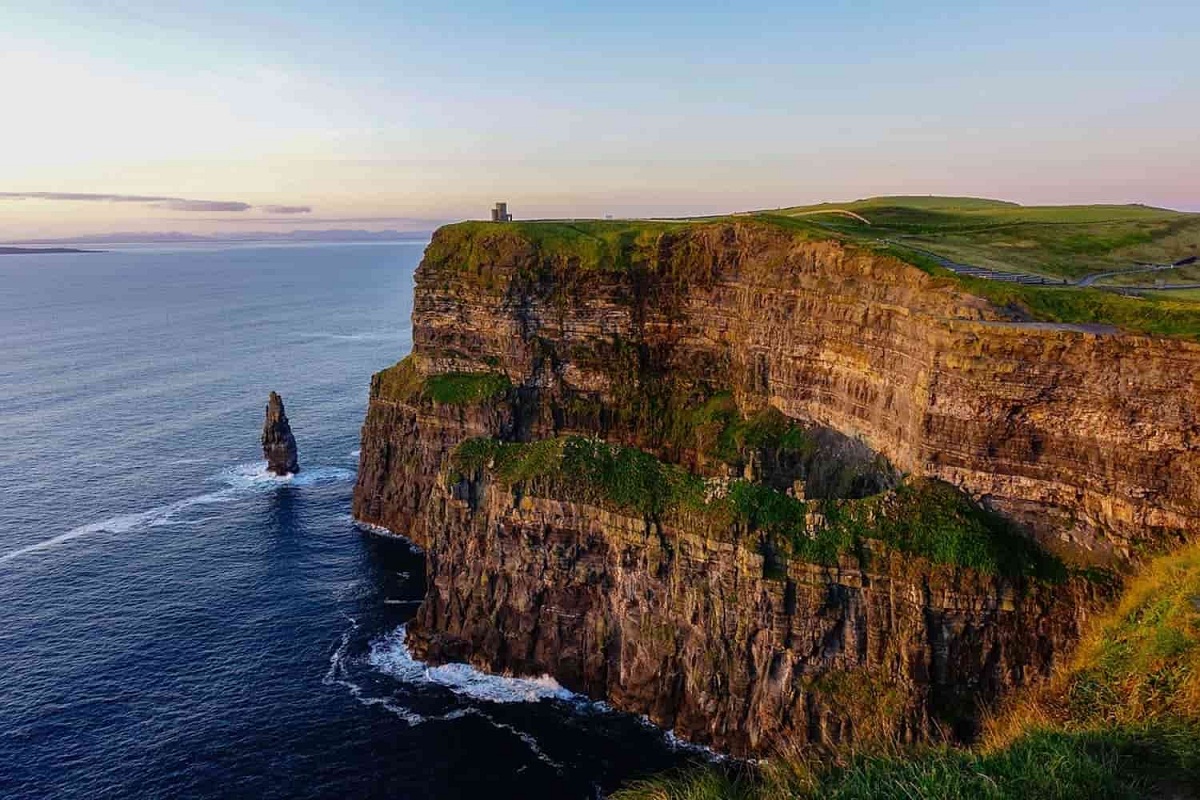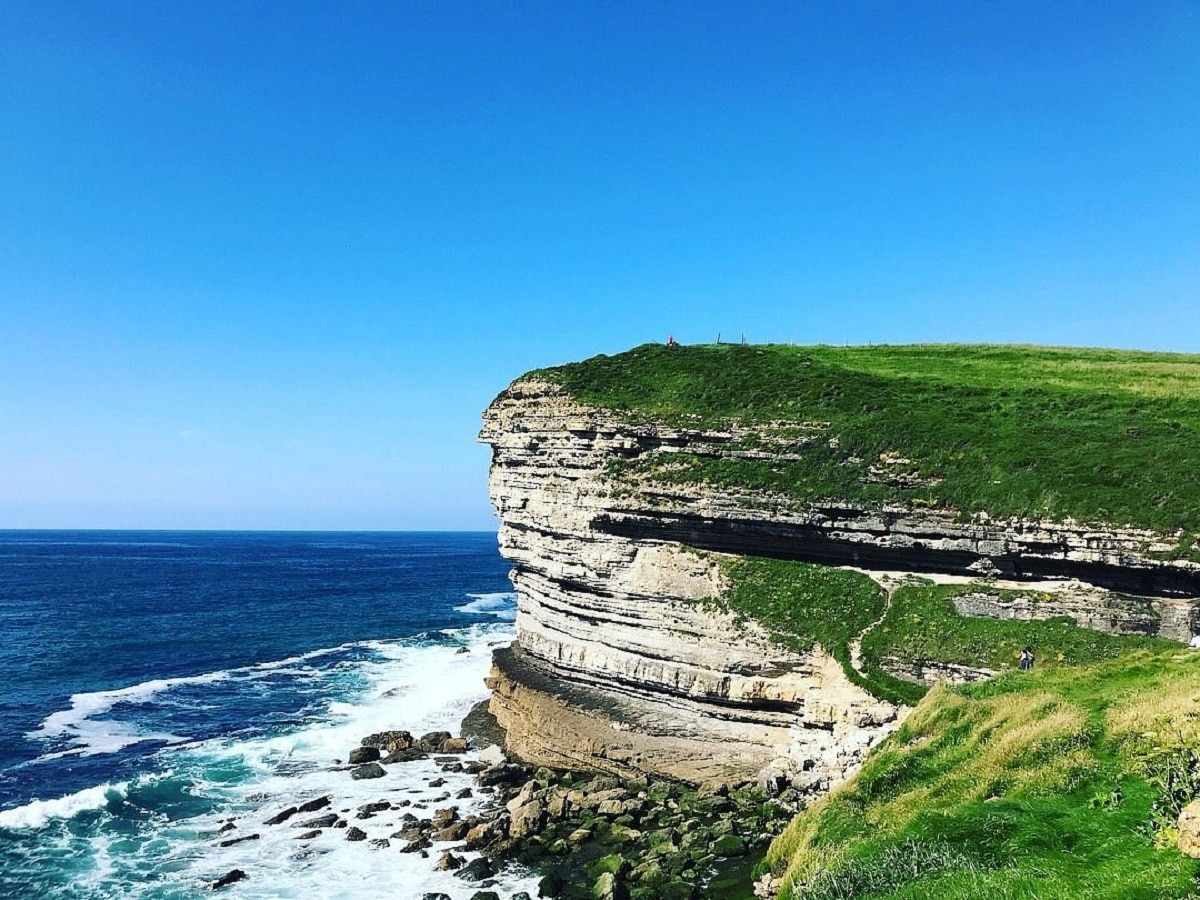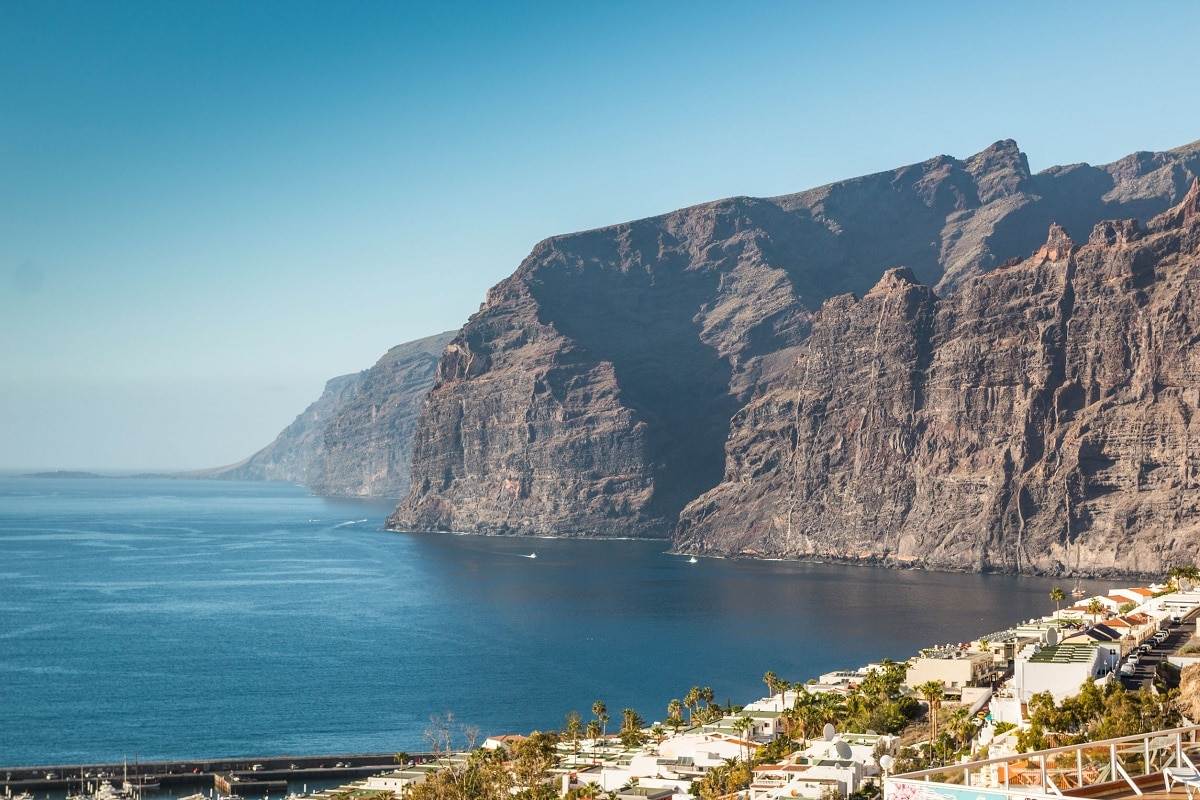
A cliff is a geographical feature that takes the form of a steep slope. In this sense, it can appear on coasts, mountains or riverbanks. A cliff coast is a coast that cuts vertically, while a cliff seafloor is a coast that forms steps or cliffs. Many people don't know what is a cliff.
In this article we are going to tell you what a cliff is, its characteristics and geological importance.
what is a cliff

The cliffs are usually composed of rocks resistant to erosion and weathering, such as limonite, sandstone, dolomite and limestone. Escarpments or cliffs are rocky slopes that suddenly cut through the ground. It is a special type of cliff formed by the movement of landslides or tectonic faults.
There are cliffs, waterfalls and caves in the background. Others, on the other hand, end up at the end of the edge. On the other hand, large slab-shaped coastal cliffs are called bluffs. It should be noted that the cliff is used for extreme sports. In the case of coastal bathers, they jump from there to dive. The cliffs of the mountains allow parachute jumps or paragliding.
But they are not the only sports that you can do in them. It is also common for many people who are passionate about outdoor and adventure activities to turn to those who do exercises, such as rock climbing. Specifically, there are several types of this discipline, standing out among all the disciplines known as picobloc.
This path is typical of the cliffs and consists of people involved, that you must be very expert in this, to do it without the use of ropes or insurance. Of course it happens in this type of places where the climbers do not run the risk of collapsing or colliding with the ledges of the rocks when falling, but they will fall directly into the sea.
Cliffs in Tenerife

There is a place in Tenerife where residents and tourists can practice all kinds of sports. We refer to the famous Los Gigantes cliffs, located between the towns of Santiago del Teide and Buenavista del Norte. The ancient Berber inhabitants of the island, the Guanches, are known as the Walls of Hell, and are characterized by their volcanic-type geological accident with huge vertical walls, They are especially found between 300 and 600 meters above sea level.
The tourist who comes to this natural corner not only enjoys observing these cliffs, but can also carry out various activities in its surroundings, such as scuba diving, since the area has a spectacular seabed.
The largest cliff in the world is located in the Karakoram Mountains of Pakistan. It is the eastern wall of the Torres del Trago and is 1.340 meters high. On the other hand, the largest coastal cliffs are located in Kaolapapa, Hawaii. Its height is 1.010 meters.
Key features

Its main characteristics are the following:
- They are mainly composed of limestone, dolomite and sandstone, which are difficult to erode.
- They have a high rise and a fairly steep incline that almost always ends in a break in the lower slope.
- They are the result of faults or changes in the lithology.
- In this geographical accident, the conditions for the growth of plants are not sufficient, but some have adapted to the place.
- They are formed through erosion and weathering processes.
- The sediments from the cliffs become part of the seabed, which is then washed away by the waves.
- At the base of the cliffs, rocks have accumulated over time, creating what are called gravel slopes.
Formation and types
Once we know what a cliff is and its characteristics, we will see its formation and types. Cliffs are usually formed through various erosion and weathering processes. The last process occurs when natural phenomena such as wind and rain cause the rocks to break. In coastal areas there are strong winds and strong waves that separate the softer and more granular rocks from the denser rocks.
The small pieces of rock that break off by weathering are called sediments or alluvium, in which sea cliffs these deposits are part of the bottom and are dragged by the waves, while on the interior cliffs they are dragged by the rivers and the wind. The largest rocks are called taludes and are piled up at the bottom of the cliffs. They can be formed by the erosive action of sea waves destroying all the foundations of the surrounding land, and the foundation material gives rise to a cave that destabilizes the upper part of the cliff and then recedes.
There are the following types of cliffs:
- active cliffs: This type of cliffs are found on deep waters and their bases are hit by the waves. The eroded material is not deposited in it either, but is carried away by ocean currents.
- Inactive Cliffs: In this case, the cliffs are formed on sandy platforms, out of reach of the waves, so they are further from the coastline.
Curiosities of a cliff
Some of the peculiarities of the cliffs are mentioned below:
- Many of the existing cliffs were formed by glaciers that they once covered much of the earth during the Ice Age.
- They are widely known because they form important geographical features such as waterfalls.
- Some of the largest cliffs on Earth are underwater. For example, there is a cliff on a ridge inside Kermadec Trench and you can find a drop of 8000 m in an extension of 4250 m.
- According to world records, the highest sea cliff in the world is Kalaupapa in Hawaii at 1010 meters high.
Among the main cliffs in Europe we have the following:
- Cliffs of Moher located in Ireland.
- Cliffs of Dover in the UK.
- Preikestolen in Norway.
- Los Gigantes in Tenerife, Canary Islands, Spain.
- kjerag in norway
- Cliffs of Herbeira in Coruña, Galicia.
- Yesnaby Cliffs located in Scotland.
- Cabo de Peñas in Asturias, Spain.
We also have some of the most famous cliffs in the world:
Some other examples of cliffs are:
- Kalaupapa Cliffs in Hawaii.
- Cliffs of Los Gigantes in Spain.
- Fira cliffs in Greece.
- Etretat in France.
- Cape Enniberg in the Faroe Islands.
- Sorvagsvatn cliff in Faroe Islands.
I hope that with this information you can learn more about what a cliff is and its characteristics.